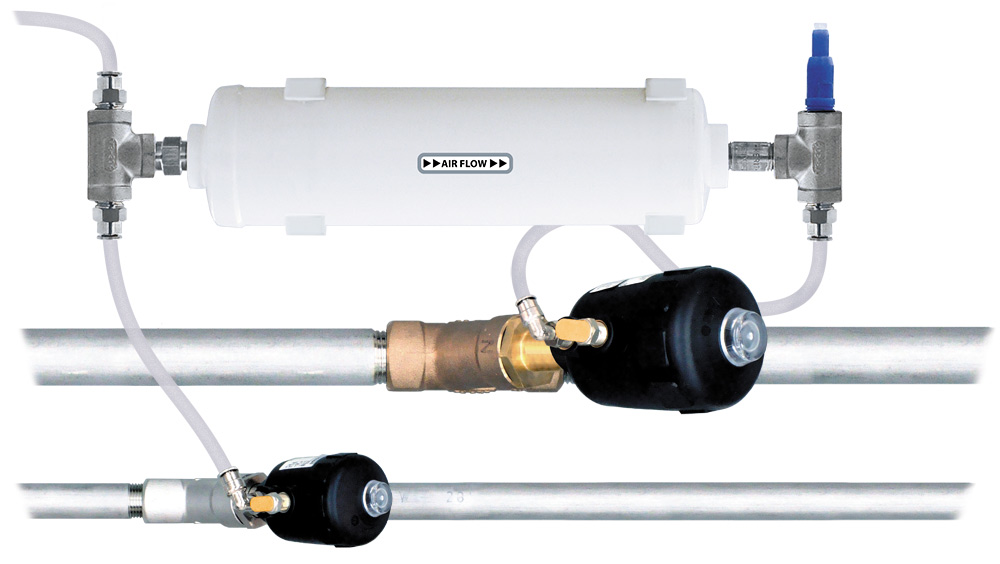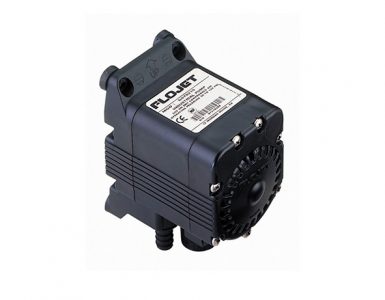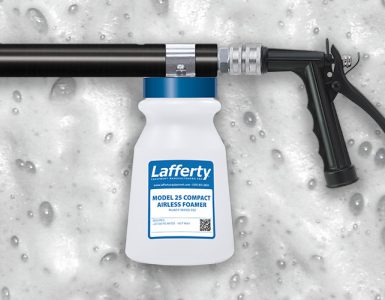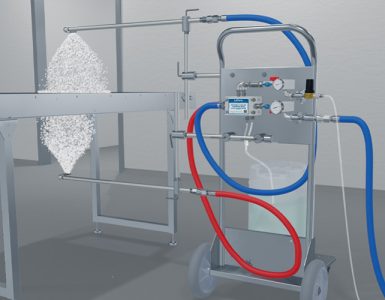Foggers quickly wet surfaces at close range, or fill the air with chemical fog/mist particles that settle onto exposed surfaces to achieve the required wet contact time.
Lafferty Foggers are mist sprayers that use compressed air and venturi action to draw ready-to-use chemical solution, atomize it, and project it as wet or dry fog particles at various distances.
Our fogging systems are built to withstand corrosive chemical sanitizers and heavy physical usage.
Lafferty manufactures hand-held foggers, portable cart foggers, automated full-plant fogging systems, and more.
Related Posts & Links
Frequently Asked Questions
- What food industries currently use fogging technology?
- Food processing (Automated fogging entire processing plants after the end of cleanup or before startup.)
- Animal confinement (Used to eliminate spreading diseases in chicken, porcine, canine and other.)
- Machine sanitation (Using hand held, portable, or automated systems to sanitize filler nozzles, chains, etc.)
- Soft drink industry (Yeast control)
- Dust suppression in grain silos and mining.
- And many, many more! The benefits of fogging are becoming common knowledge and more industries are taking notice.
- Is fogging used for environmental sanitation?
- Yes! Although food processing sanitation is the most prevalent use of foggers, we offer fogging systems for odor remediation in garbage dump areas, wastewater plants, hospitality, and more. Wet fog can even be used for dust suppression or particulate encapsulation. Fog is a great way to economically and quickly apply liquid products to large areas.
- Yes! Although food processing sanitation is the most prevalent use of foggers, we offer fogging systems for odor remediation in garbage dump areas, wastewater plants, hospitality, and more. Wet fog can even be used for dust suppression or particulate encapsulation. Fog is a great way to economically and quickly apply liquid products to large areas.
- When is fogging performed?
- Fogging is generally done at times when people are not present. However, generally, fogging that is confined in machinery or hand applied can be done at any time.
- Fogging is generally done at times when people are not present. However, generally, fogging that is confined in machinery or hand applied can be done at any time.
- How often do plants fog (nightly, weekly, etc)?
- The frequency of fogging will depend on the exact purpose of the fogging operation as well as the chemistry used.
- The frequency of fogging will depend on the exact purpose of the fogging operation as well as the chemistry used.
- Do you have any applications where the fog is used for direct food contact surface sanitation?
- Yes! Fog is an ideal way to economically and quickly apply sanitizer to previously cleaned food processing equipment and the areas that surround the equipment.
- Fogging allows sanitizing chemicals to reach into small seams and gaps that hand cleaning simply cannot accomplish.
- Also, fogging is the only way to treat the cubic volume of air in a facility.
- What sanitizers are commonly used for fogging?
- For food contact areas:
- Quaternary ammonia compounds, peracetic acid, acid sanitizers, chlorine dioxide, etc.
- For direct food fogging:
- Acetic acid, ascorbic acid, probiotics, etc.
- CAUTION: Only use chemicals that are approved for atomization and for the sanitation requirements of the application in question. Consult chemical manufacturer to ensure that the product is safe and suitable for fogging.
- For food contact areas:
- Which sanitizers should not be used and why?
- Since foggers use compressed air as the motive force to produce the fog, flammable products should not be fogged. Alcohol, as a sanitizer, is one that comes to mind as a possible product that should not be atomized.
- Iodine fog can produce heavy stains on equipment, etc.
- Any product that is to be converted to a fog can also increase in toxicity and may damage surfaces. OSHA regulations and personal exposure must be kept in mind when applying fog products.
- How do you determine if a portable fogger or mounted fogger should be used?
- Portable foggers are generally used for single rooms (under 1000 sq. ft.)
- A portable fogger can be used in a larger room if it is moved around or ran for a longer period of time.
- Installed (mounted) systems are beneficial because they can be arranged to run in sequence to fog an entire facility or large area without needing to re-position the foggers each cleaning shift.
- Mounted systems can either draw ready-to-use chemistry at the fogger or receive chemical solution via a central pump fed system (so that no chemistry is required in the work area).
- Which systems can be timed to run automatically?
- Any fogger (portable or mounted) can be converted to a “timed” fogger by adding a control box to regulate the compressed air supply to the fogger.
- Complete automation is generally used to cover large application areas and/or multiple application areas from a central supply, where there are time constraints, or there is a need to minimize possible human or animal exposure.
- How much surface area will a fogger cover?
- Each class of fogger (612, 633, 305, 455) produces a different type of fog which varies in “wetness” and how far the fog is projected.
- To achieve complete surface coverage, the fogger must be run for long enough that the liquid can completely coat the surface. Different fog types will accomplish this faster, but may require a higher volume of compressed air.
- What is the micron size of the fog particles/droplets?
- Unlike most fogging and misting systems, Lafferty Foggers are adjustable!
- While each fogger class (612, 633, 305, 455) produces a different type of fog, the particle size and output wetness can be reduced in the field.
- Install a metering tip or needle valve on the chemical suction assembly to reduce the flow of chemical into the air stream. This will increase the air/solution ratio to create smaller and drier particles.
- Consider that advertised fog particle sizes can only be specified based on certain atmospheric conditions and chemical properties. Therefore, particle size is a secondary consideration to whether the chemical is being applied consistently and providing the required wet contact time for effectiveness.
- Refer to the unit-specific options in the Installation & Operation Instructions for each fogger.

Want to learn more? Please contact us to discuss your situation and goals.



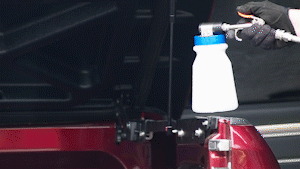
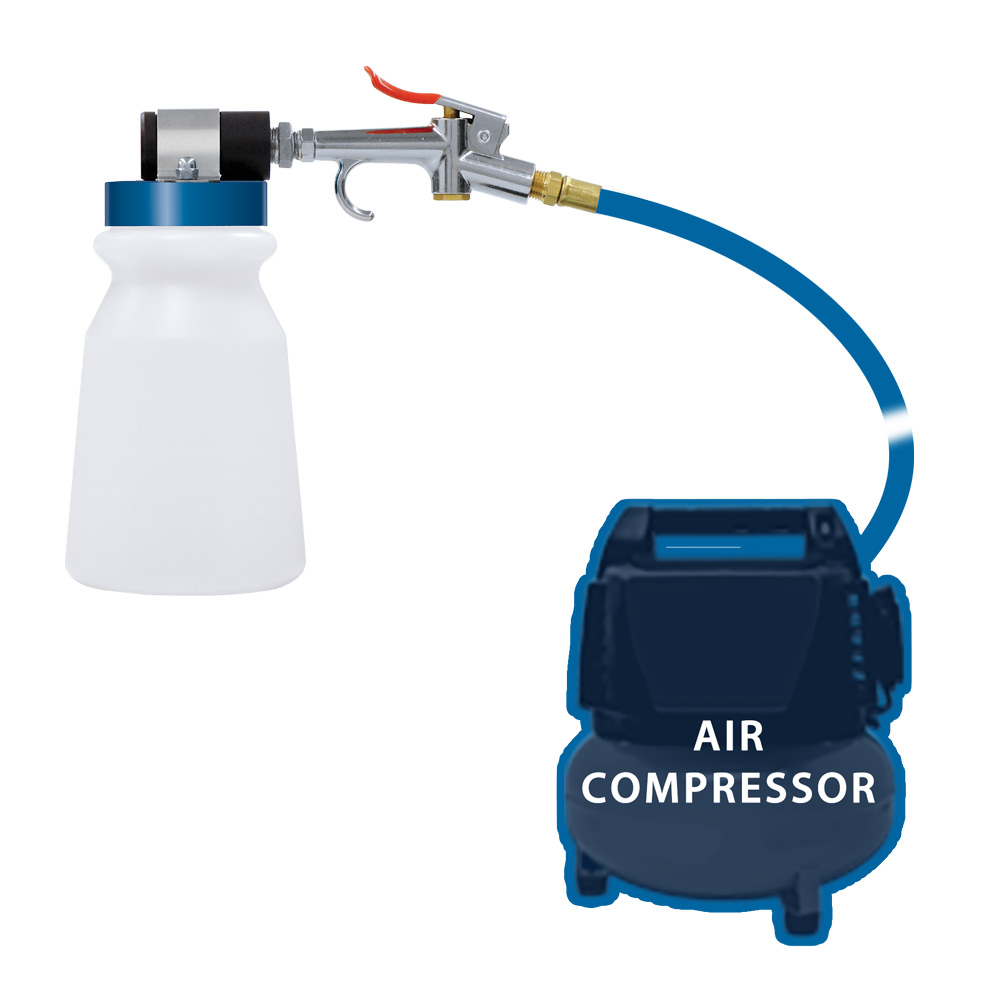
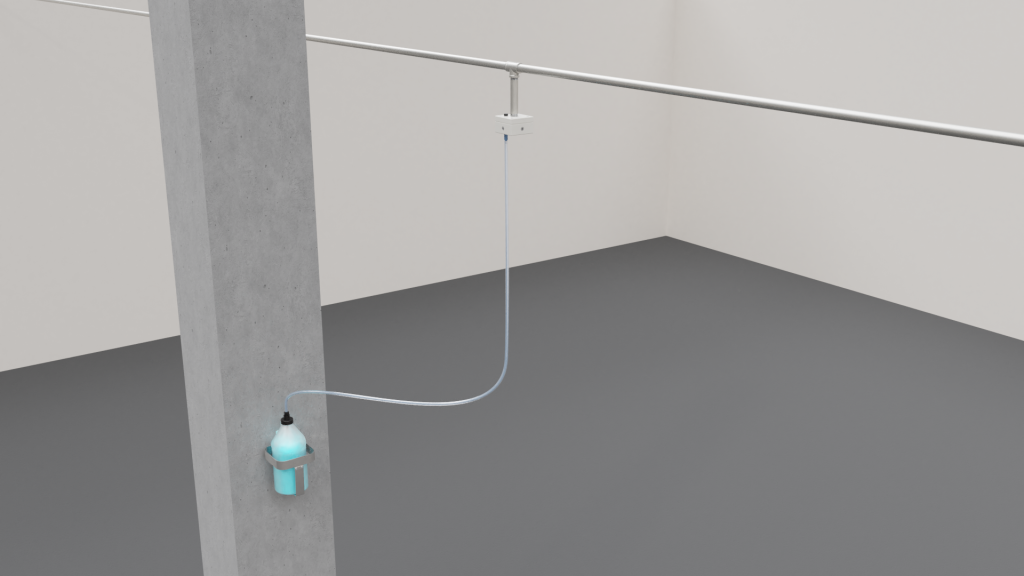
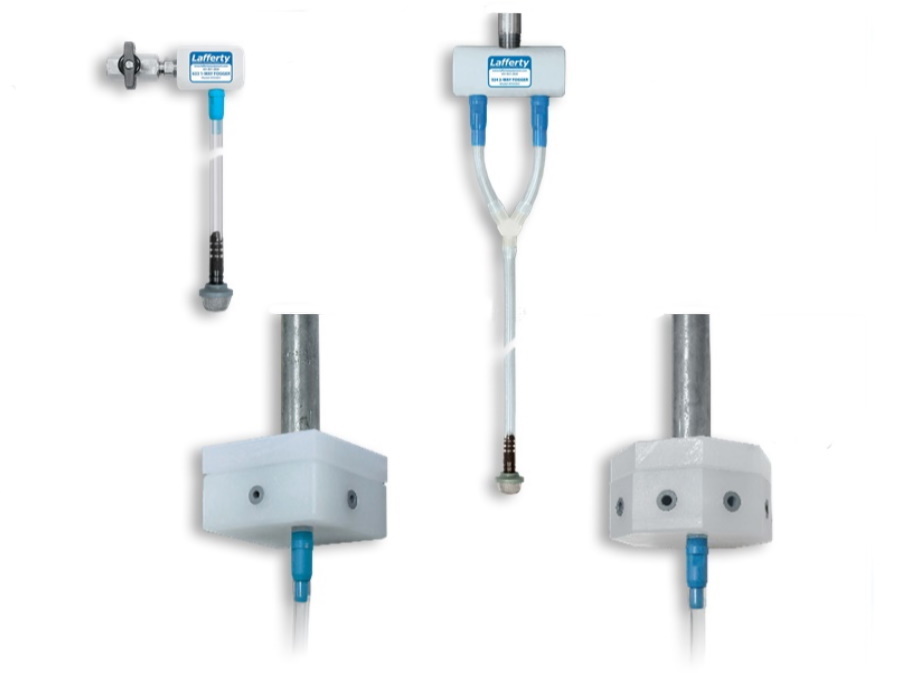
_w919045.jpg)
